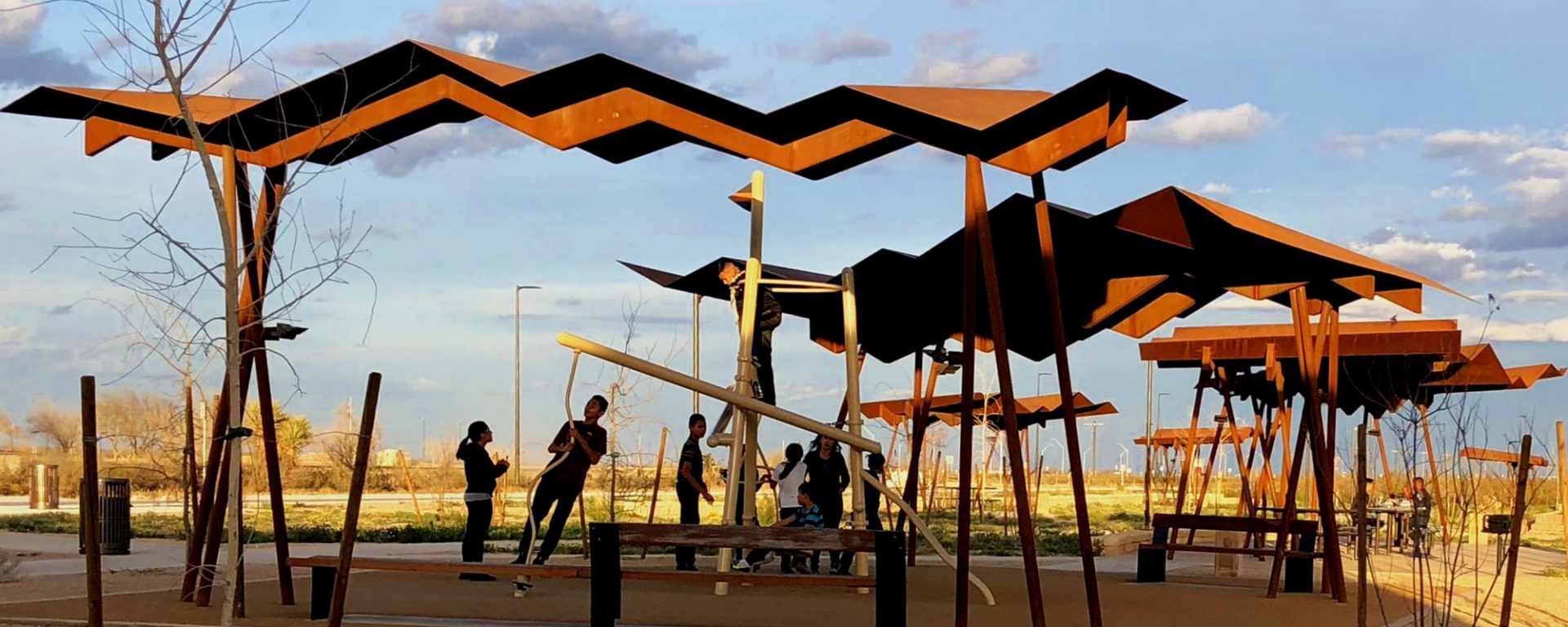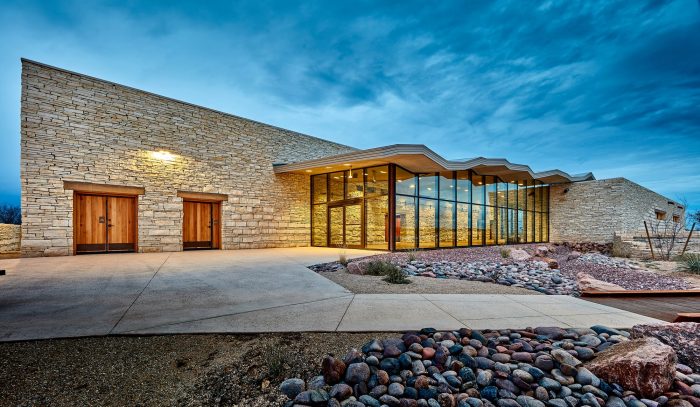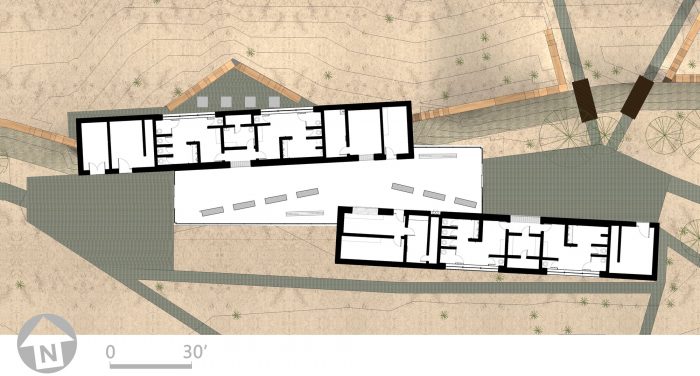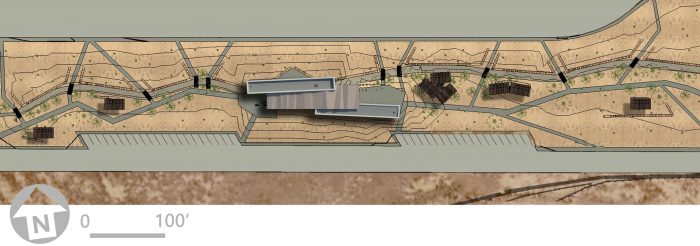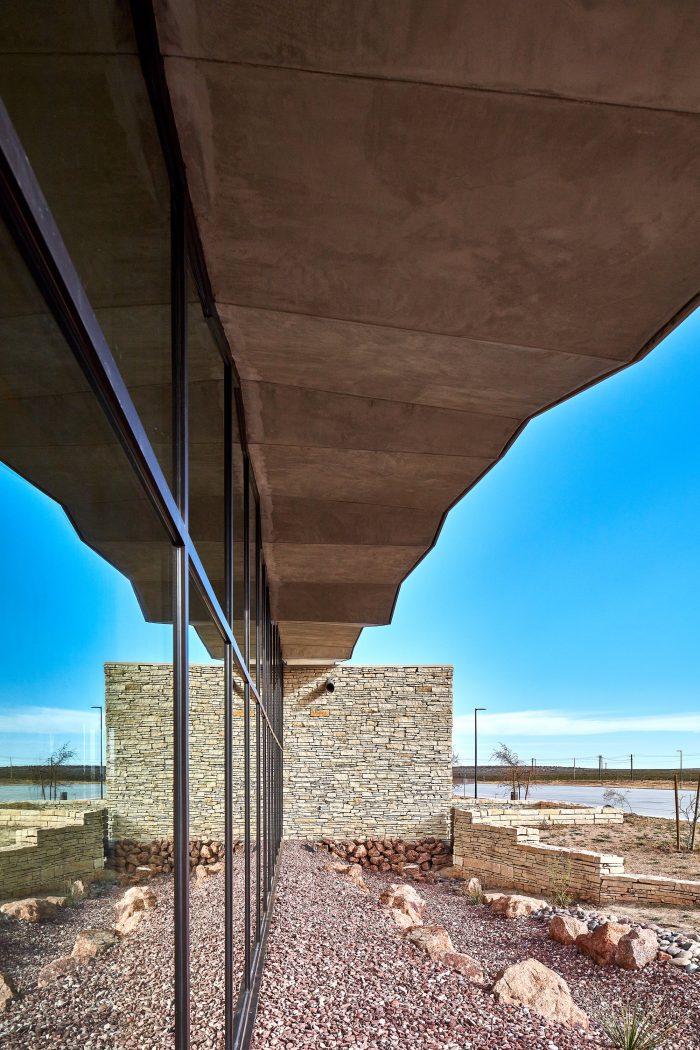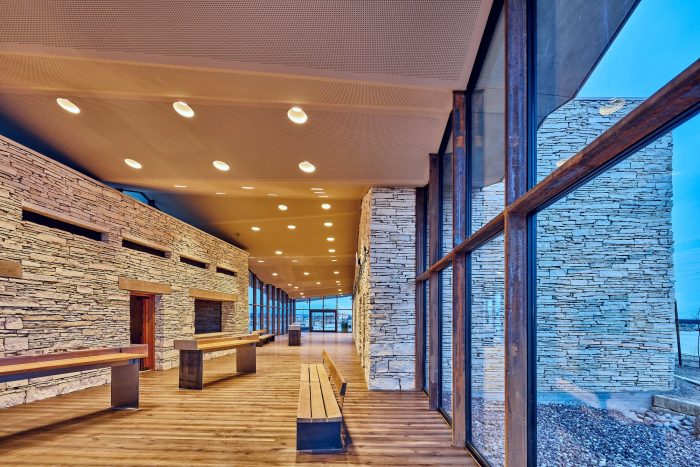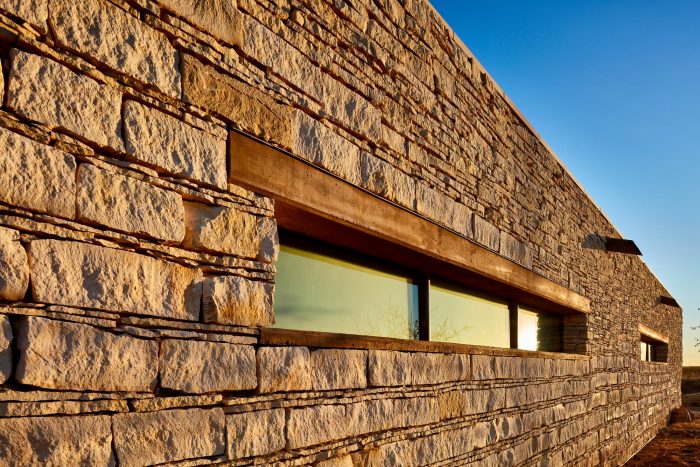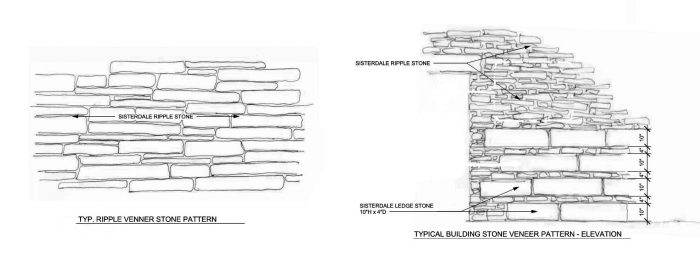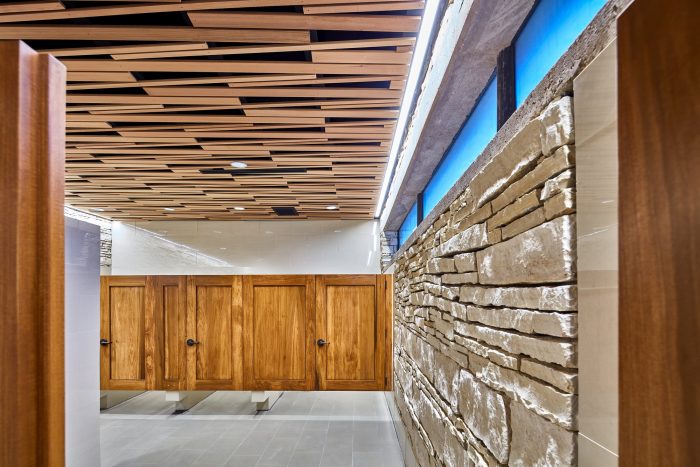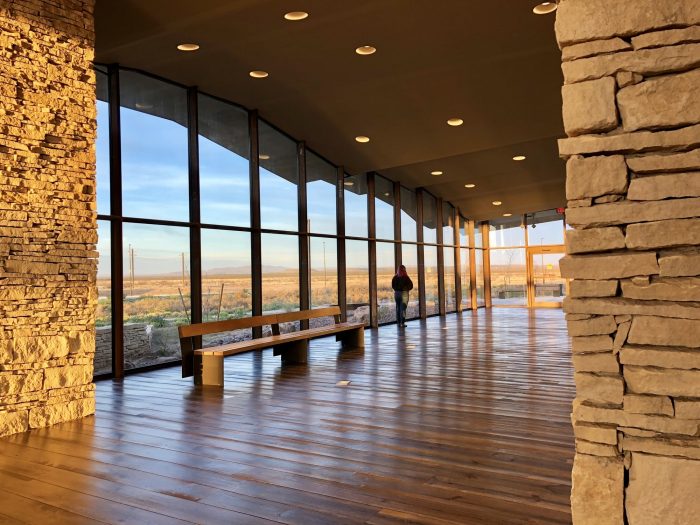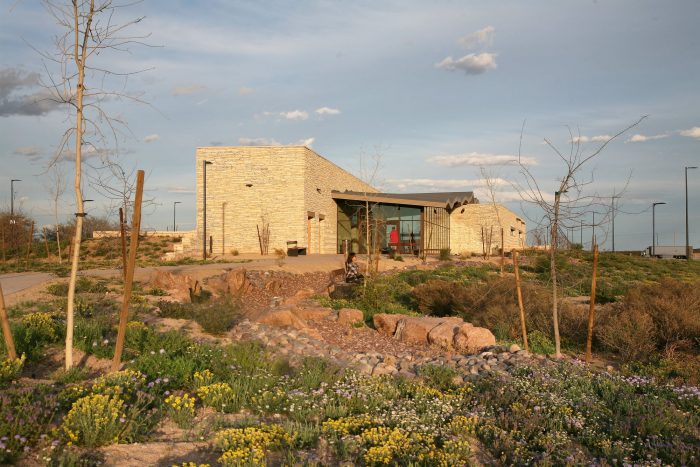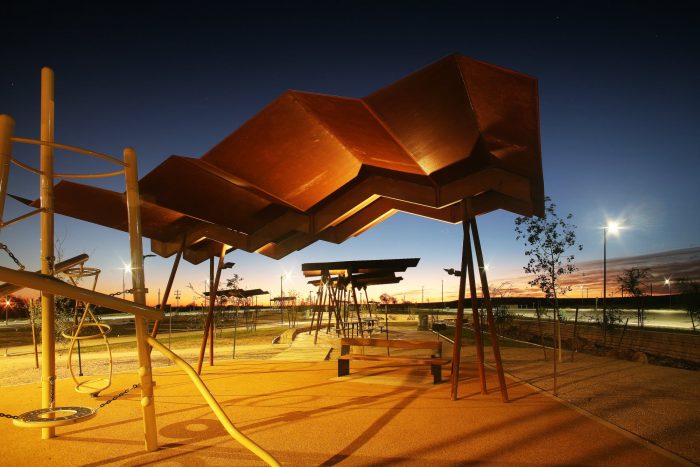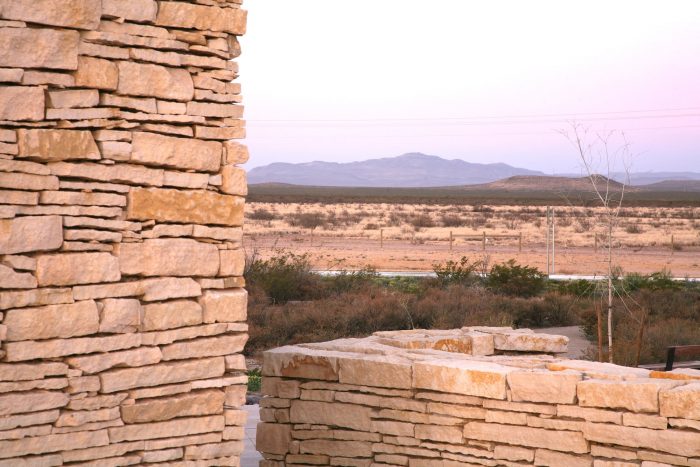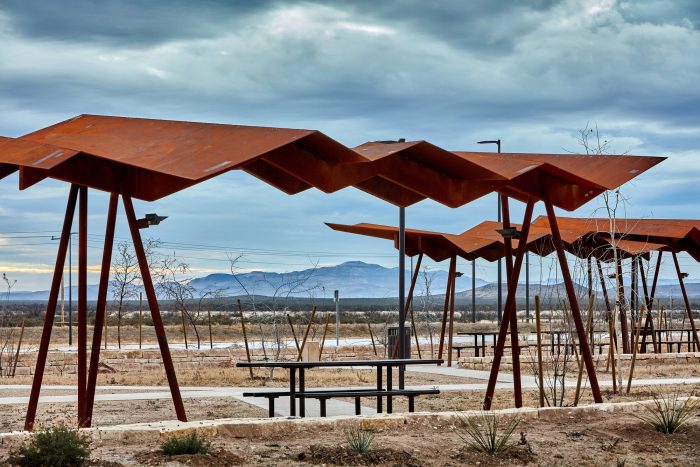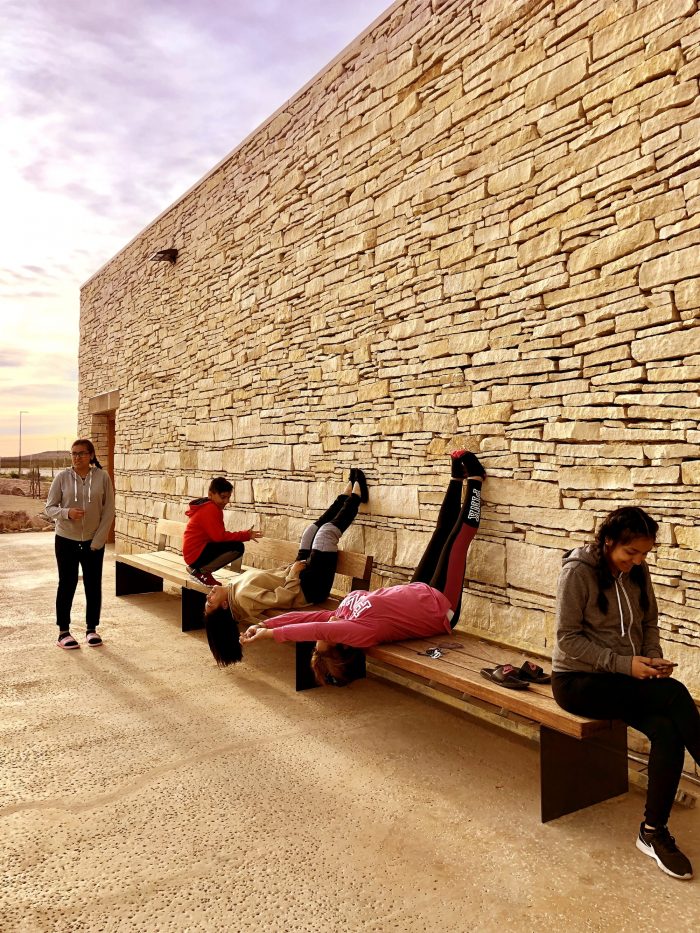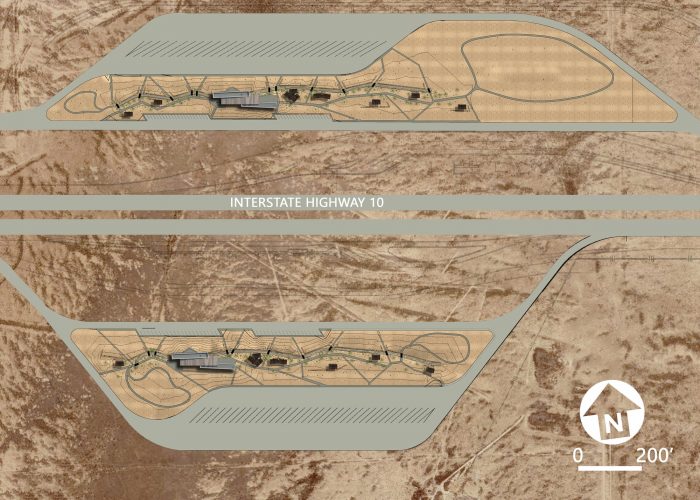沿着州际公路,本土石灰岩地层不时露出来。自然的草丛、中轴线和山脉沿着广阔的远程景观分层。沿着戴维斯山的东部途径,一个州际公路安全休息区衍生出西德克萨斯州奇瓦瓦沙漠这一地区的地质、生态和文化历史。
Native limestone strata is periodically revealed along the Interstate highway. Natural grasses, mesas and mountains layered along the expansive remote landscape. Along the eastern approach to the Davis Mountains, an interstate highway safety rest area is derived of the geology, ecology and cultural history of this region of the Chihuahuan desert of West Texas.
项目
该项目为旅行的公众提供厕所、自动售货机、文化和历史展览、野餐区、游戏区、自然小径和停车位,供沿着连接西海岸和东海岸的10号州际公路旅行的疲惫司机使用。 旅行者乘坐汽车、货车、房车、卡车和公共汽车经过。德州交通局的目标是通过为司机和家庭提供一个欢迎和参与的地方来休息和缓解道路的疲劳,从而提高高速公路的安全性。
Program
The project provides to the traveling public restrooms, vending, cultural and historical exhibits, picnic areas, play areas, nature trails, and parking for weary drivers who travel along Interstate 10 that connects the west coast to the east coast. Travelers pass by in cars, vans, RVs, trucks and buses. The goal of the Texas Department of Transportation is to enhance highway safety by providing drivers and families with a welcoming and engaging place for rest and relief from the road fatigue.
设计策略
– 土地本身讲述了西德克萨斯的故事。
– 对景观和地质的实质性诠释–节奏从80英里/小时的高速公路速度下降到沿着自然小径漫步,从远处的山峰到微小的沙漠花朵。
Design Strategies
• The land itself tells the story of West Texas.
• A substantive interpretation of landscape and geology –the pace drops highway speed of 80 mph to a stroll along nature trail, from distant mountains to tiny desert flowers.
– 移步换景的石块和借山看水,集中了东西方的长长的视野–一个旅行者的起点和终点。
– 有机分层的原生石材暗示了该地区的地质情况
– 有机的折叠式屋顶呼应地平线和广阔天空中的浮云。
– 木板地板让人想起早期的边疆建筑。
• Shifted stone masses and borrow mountain views to focus long East/West vistas – a traveler’s origin and destination.
• Organically coursed native stone suggests geology of the region
• Organic folding roofs echo the horizon and floating clouds in the expansive sky.
• Wood plank floors audibly recall early frontier structures.
– 干涸的小溪地形使场地排水,连接野餐的凉亭,并讲述了一个沙漠生态故事。
– 折叠的板式皮质钢凉亭在广阔的天空下诠释着背景形式和色彩。
– 原生沙漠植物在施工期间被围起来保护。
– 本地植物节约用水,不需要永久灌溉。
– 被动式太阳能方向,以减少不利的热增益,实现氛围和透明度。
• Dry creek topographies drain the site, link picnic arbors and tell a desert eco-story.
• Folded plate corten steel arbors against a big sky interpret context form and color.
• Native desert plants fenced and protected during construction.
• Native plants to conserve water and do not require permanent irrigation.
• Passive solar orientation to reduce adverse heat gain and achieve ambience and transparency.
沿着I-10公路的州际公路安全休息区是由西德克萨斯州这个沙漠地区的地质、生态和文化历史衍生出来的,位于戴维斯山的东面。 该项目为旅行的公众提供了洗手间、自动售货机、文化和历史展览、野餐区、儿童游乐区、自然小径以及为疲惫的汽车、货车、房车、卡车和公共汽车司机提供的停车场。 德州交通局对该项目的目标是通过为司机和家庭提供引人入胜的休息和缓解道路的疲劳来加强公路安全。
An interstate highway safety rest area along I-10 is derived of the geology, ecology, and cultural history of this desert region of West Texas at the eastern approach to the Davis Mountains. The project provides to the traveling public restrooms, vending, cultural and historical exhibits, picnic areas, children’s play areas, nature trails and parking for weary drivers of cars, vans, RVs, trucks and buses. Texas Department of Transportation’s goal for the project is to enhance highway safety by providing drivers and families with engaging rest and relief from the fatigue of the road.
该设计通过对该地区的实质性诠释,提供基本的旅行设施。 核心的灵感是土地本身,大天空,以及它们的美丽和故事的多种展现方式–在高速公路上可以感觉到的美丽,但只有在步行时才能完全掌握。 从尘埃和岩石中窥视的小花的亲密规模,到由分层山脉描绘的遥远的地平线–土地是这里的过去、现在和未来的故事。展区的空间和线条加强了作为项目使命核心的东西向旅行,同时邀请人们从80英里/小时的视角暂停下来,更亲密地欣赏土地和天空。
This design provides essential travel amenities via a substantive interpretation of the region. The core inspiration is the land itself, the big sky, and the many ways their beauty and stories are revealed – beauty that can be sensed at highway speed but only fully grasped on foot. From the intimate scale of tiny flowers peeking from dust and rock to the distant horizon scribed by layered mountains –the land is the story of past, present and future here. Space and line in the exhibit area reinforce the east/west travel that is at the core of the project’s mission, while inviting pause from the 80 mph perspective to appreciate land and sky more intimately.
每栋建筑面积为7600平方米(一栋东行,一栋西行),由两块石块组成,移位后可以看到山脉地平线的借景,并将视线集中到东边和西边–出发地和目的地。 这种几何形状进一步提供了有益的被动式太阳能导向。当地的石头被有机地加工,以暗示在高速公路上随着地形的变化而出现的地质情况。画廊空间的屋顶随机折叠以呼应地平线。 木板地板让人联想到早期的德克萨斯边疆结构。干涸的小溪将雨水带离建筑,同时将科腾钢板的野餐帘连接起来,提醒人们水是如何滋养和雕刻沙漠土地的。 在施工过程中,当地的沙漠植物被围起来并受到保护。
Each building at 7,600 sq (one east-bound and one west-bound) is composed of two stone masses shifted to frame borrowed views of the mountain horizon and to focus through-views to the east and west – origin and destination. The geometry further provides beneficial passive solar orientation. Native stone is organically coursed to suggest the geology revealed in highway land cuts as topography rolls. The roof of gallery spaces randomly folds to echo the horizon. Wood plank floors give audible recall to early Texas frontier structures. Dry creeks carry rain water away from the buildings while connecting the Corten steel plate picnic shades with reminders of how water nourishes and carves the desert land. Native desert plants were fenced and protected during construction.
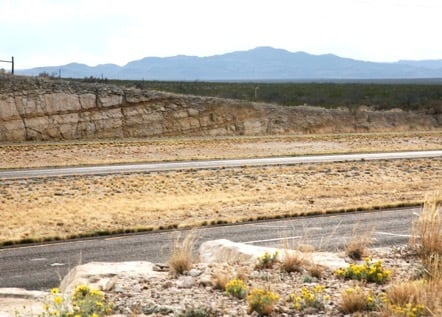
Architects: Richter Architects
Area : 7600 ft²
Year : 2018
Photographs :Craig Blackmon, Elizabeth Chu Richter, David Richter
Manufacturers : Carlisle SynTec, Daltile, CMC, Concho Valley Brick and Stone, Rocky Mountain Metals
Lead Architects : David Richter, FAIA, Elizabeth Chu Richter, FAIA
MEP Engineer : Stridde, Callins
Landscape : MRWM
Structural / Civil Engineer : Jaster Quintanilla Dallas, LLP
Structural Engineering : Jaster Quintanilla Dallas
Civil Engineering : Jaster Quintanilla Dallas
City : New Orleans
Country : United States

